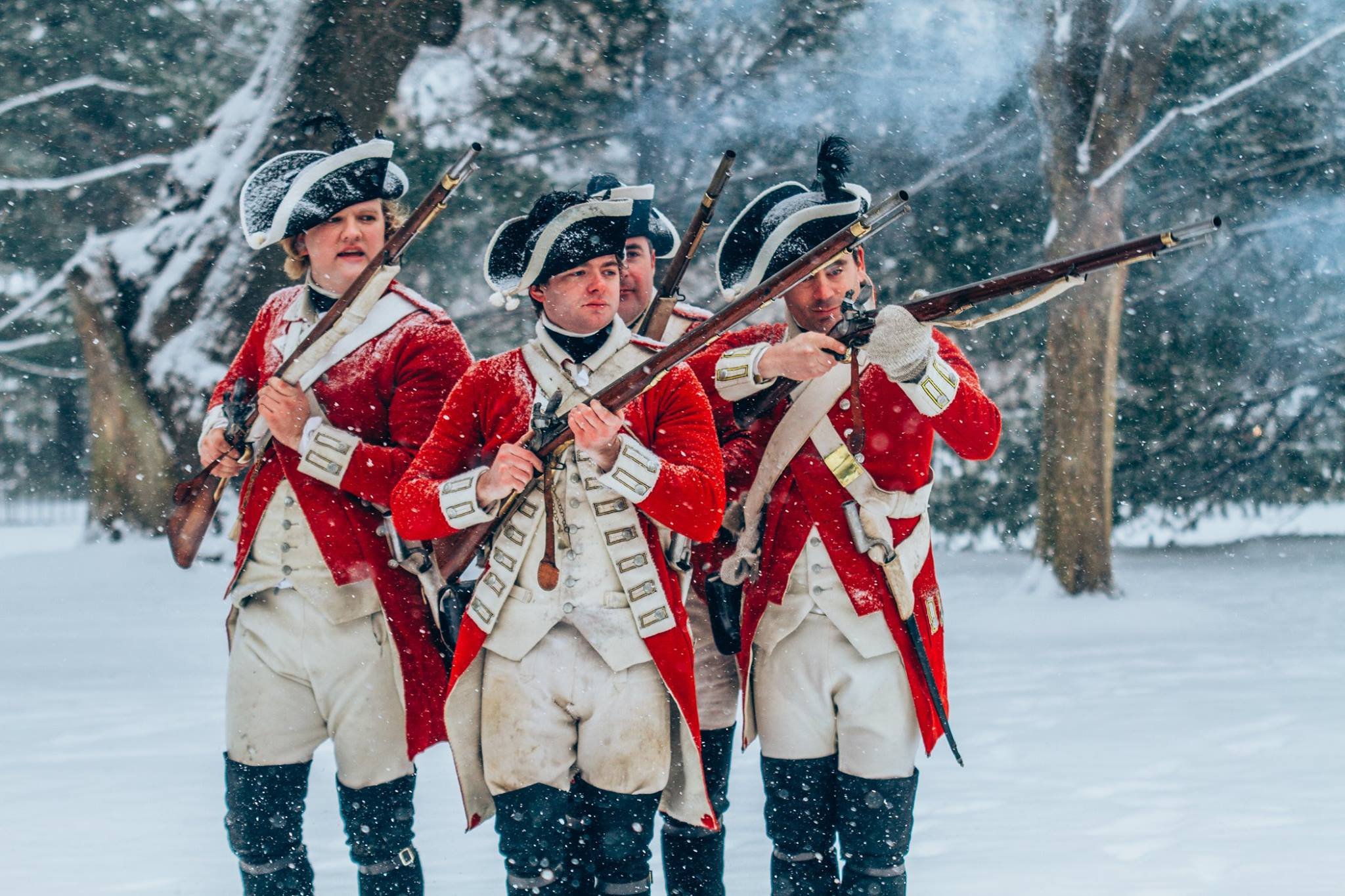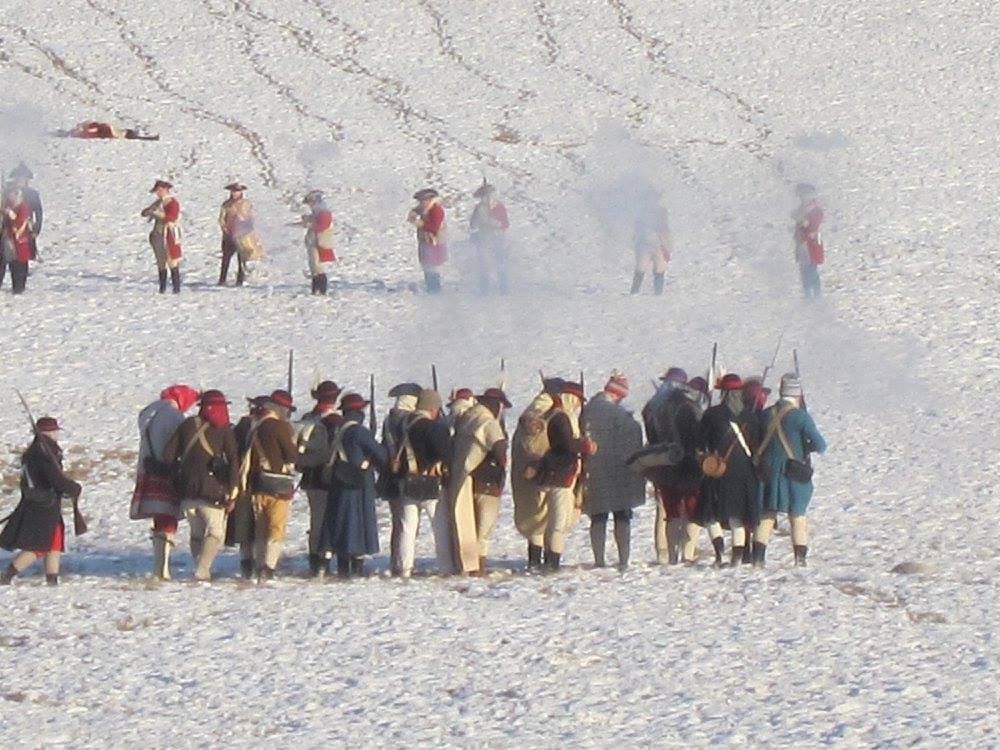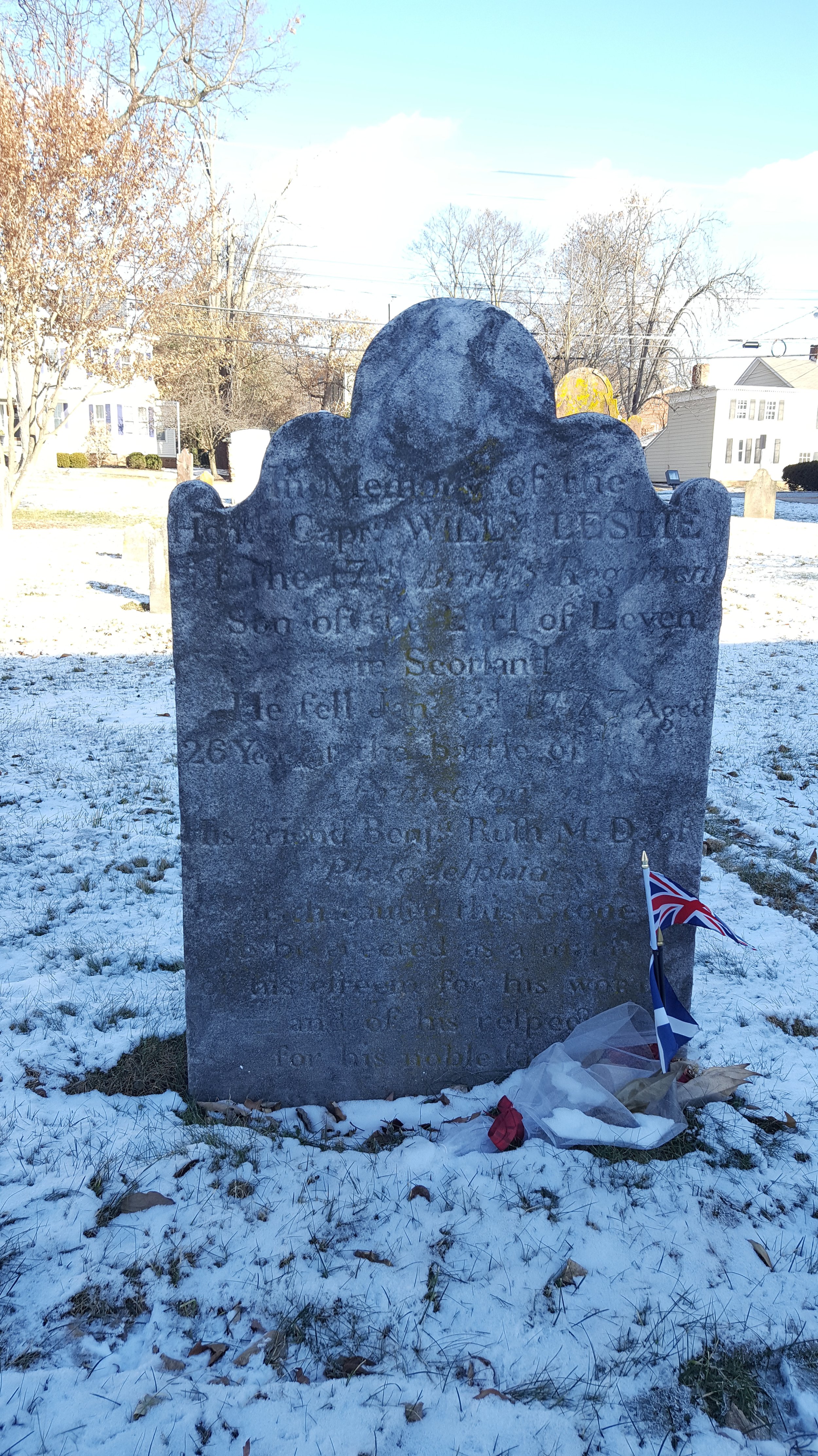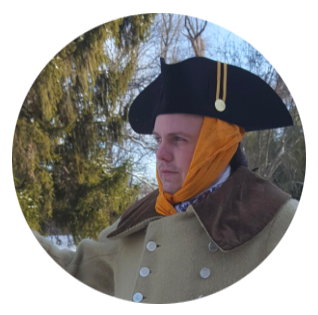The 241st Anniversary of the Battle of Princeton: Surgeon Wardrop's Account
January 3, 2018, marks the 241st Anniversary of the Battle of Princeton, arguably the most pivotal battle in the 17th Regiment of Infantry's history. It gave them the nickname "The Heroes of Princetown," which lasted well into the 1790s if not beyond. And the engagement also sealed the legendary status of Captain William "Willie" Leslie, son of the Earl of Leven (Dr. Benjamin Rush's one-time patron). Killed in the opening exchange of fire between General Hugh Mercer's Brigade and the 17th, Leslie would be interred in Pluckemin with full military honors on January 5, 1777. His passing spurred a tremendous amount of correspondence and interest in the battle.
We see some of that interest reflected in the account of the battle below, which I transcribed at the National Archives of Scotland in the autumn of 2006. On May 21, 1777, John Belsches, a friend of the Leslie family, wrote to the Earl of Leven from Edinburgh to convey information gleaned from a visit by Surgeon Andrew Wardrop of the 17th (Edinburgh was a regular stop for returning Scottish military men). Belsches rendered the medical man's name as "Wardrobe:" a little food for thought for those of you who enjoy the idea of phonetic/accented spelling. Though Belshes had not spoken directly with Wardrop at this juncture, the information below matches what we know of the battle from other sources. Beginning with commentary of Captain Leslie's death, the dispatch provides a lengthy, albeit quick-paced, insight into the battle from a direct participant, a fitting memorial for this anniversary. It may not be a coincidence that Wardrop resigned his post in the 17th on January 31, 1777: the experience simply have have been too much for him. Wardrop had served with the regiment since July 15, 1772, and was succeeded by Surgeon's Mate John Horne (WO65/27 Army List for 1777, The National Archives of Great Britain).
 National Archives of Scotland, General Deposit 26/9/513/8 John Belsches to Earl of Leven, Edinburgh 21 May 1777
National Archives of Scotland, General Deposit 26/9/513/8 John Belsches to Earl of Leven, Edinburgh 21 May 1777
"Mr. Wardrobe [Wardrop] who was Surgeon to the 17th is come here, tho’ I have not conversed with himself yet I have had every information that he can give relative to the fall of our lamented & dear friend his account exactly corresponds with what we heard before, Wardrobe was not with him but at about a hundred yards distance in the rear & could be of no service, as he no sooner received the shot than he instantly expired without a groan, the only motion he made was to give his watch to his servant, who put the body on a baggage cart & conducted it for a considerable time in spite of a very heavy fire from the Enemy but at last he was obliged to abandon it & follow the regt or must have given himself up prisoner to the provincials which wd. have served no good purpose__ Wardrobes account of the affair is that the 17 & 56 [55th Regt] were on their march from Princetown to join a detachment of the army at Trentown when they were about a mile & a half from the former the advanced guard discovered a body of Americans which tho’ superior in number Coll Mawhood had no doubt of defeating, however he went himself to reconoitre them & discovered their vast superiority in numbers wh..."

"...made him wish to retreat to the Town from whence he had come but this he found impossible as the Enemy were so near, Their was a rising ground which commanded the country about half a mile back & about a quarter of a mile off the road this he wished to gain & dress up the two regts. with 50 light horse on one flank & /50,/who were dismounted/, on the other; The Americans endeavoured [sic] also to gain the rising ground & their first Column reached one side of it rather before the two regts. got to the other, so that just when the 17th reached the top they received the fire of this column composed of about 2000 men by which all the mischief was done The 56 [55th] /who wd. not advance in a line with the 17th inspite of Coll Mawhood frequently calling out to Capt. who commanded them to mind his orders & come up/ as soon as they saw such a slaughter among the first rank of the 17th, immediately run off on their commanding officer saying it was all over with the others; The 17th returned a very well levelled fire at the provincial Colm. & instantly leaped over some rails which were [before] them & Charged them wt their bayonets [word missing from tear in letter] tho’ ten times their number almost, they ran off & retreated to the other Colms. of the rebels four in number, & consisting of 2000 men each when the provincials first fired they were about 25 paces he thinks from the 17th. & is certain they were not above 30_ Upon the whole rebel army advancing, the 17th Regt. & the 50 light horse who were mounted /&who behaved very well/ retreated as fast as possible leaving their killed & wounded, when Washington came up he assured Capt. McPherson & the other wounded that their [sic] was not a private man in that regt. but should be used like an officer on account of their gallant behavior__ The 56th [55th] run off in the greatest confusion to Princetown_ The 40th who were left to guard Prtn. never came up with the 17, Altho’ Col. Mawhood sent for them as soon as he suspected the strength of the enemy__ So far as to what relates to the 17 my paper will admit of no more----------"

For disambiguation purposes: the Captain McPherson mentioned above was Captain-Lieutenant John McPherson, who commanded the Colonel's Company. McPherson, one of three captains present with the regiment on January 3rd, was shot through the lungs and spent several months recovering behind rebel lines before being exchanged and sailing home to Edinburgh. On January 4th, he was promoted to full captain and would retire from the regiment in 1778, dying a few years thereafter. The account above greatly exaggerates the number of rebel troops involved in the battle and leaves out some significant British forces, including a battery of the Royal Regiment of Artillery and various smaller elements of units involved in the fight. Nevertheless, it provides a stunning testimony to the ferocious engagement that took place 241 years ago.
 DR. WILL TATUM PhD.Will received his BA in History from the College of William & Mary in Virginia in 2003, and his MA and PhD from Brown University in Rhode Island in 2004 and 2016. His exploits in Revolutionary War Living History began with a chance encounter at Colonial Williamsburg’s Under the Redcoat event in 2000.
DR. WILL TATUM PhD.Will received his BA in History from the College of William & Mary in Virginia in 2003, and his MA and PhD from Brown University in Rhode Island in 2004 and 2016. His exploits in Revolutionary War Living History began with a chance encounter at Colonial Williamsburg’s Under the Redcoat event in 2000.
Over the subsequent years, he has traveled throughout the United States and Great Britain researching the eighteenth-century British Army and used the results of those labor to improve living history interpretations. The beginning of this journey in 2001 marked the start of the current recreated 17th Infantry.

